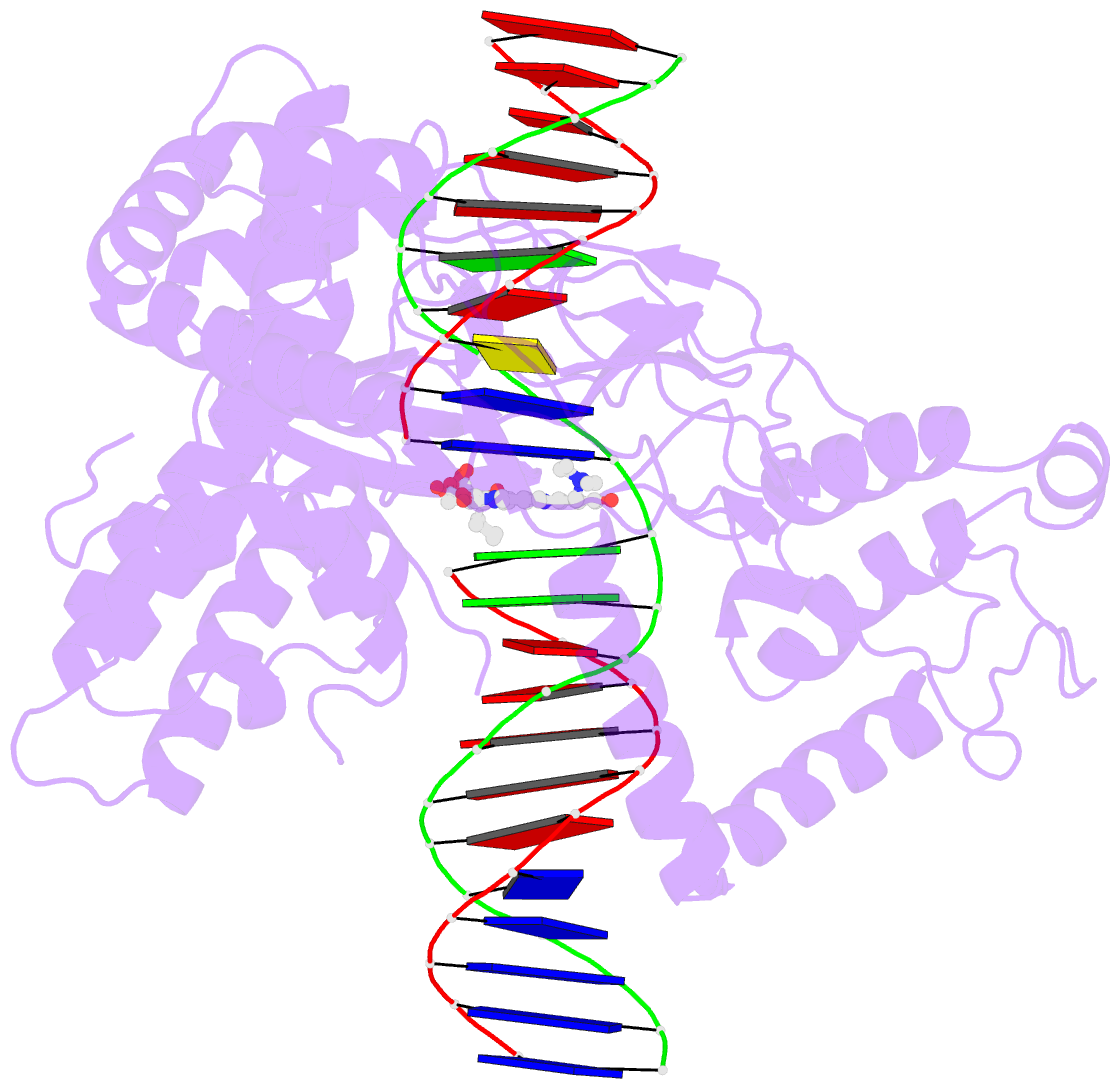Summary information and primary citation
- PDB-id
- 1rr8; SNAP-derived features in text and JSON formats;
DNAproDB
- Class
- isomerase-DNA
- Method
- X-ray (2.6 Å)
- Summary
- Structural mechanisms of camptothecin resistance by mutations in human topoisomerase i
- Reference
- Chrencik JE, Staker BL, Burgin AB, Pourquier P, Pommier Y, Stewart L, Redinbo MR (2004): "Mechanisms of camptothecin resistance by human topoisomerase I mutations." J.Mol.Biol., 339, 773-784. doi: 10.1016/j.jmb.2004.03.077.
- Abstract
- Human topoisomerase I relaxes superhelical tension associated with DNA replication, transcription and recombination by reversibly nicking one strand of duplex DNA and forming a covalent 3'-phosphotyrosine linkage. This enzyme is the sole target of the camptothecin family of anticancer compounds, which acts by stabilizing the covalent protein-DNA complex and enhancing apoptosis through blocking the advancement of replication forks. Mutations that impart resistance to camptothecin have been identified in several regions of human topoisomerase I. We present the crystal structures of two camptothecin-resistant forms of human topoisomerase I (Phe361Ser at 2.6A resolution and Asn722Ser at 2.3A resolution) in ternary complexes with DNA and topotecan (Hycamtin), a camptothecin analogue currently in widespread clinical use. While the alteration of Asn722 to Ser leads to the elimination of a water-mediated contact between the enzyme and topotecan, we were surprised to find that a well-ordered water molecule replaces the hydrophobic phenylalanine side-chain in the Phe361Ser structure. We further consider camptothecin-resistant mutations at seven additional sites in human topoisomerase I and present structural evidence explaining their possible impact on drug binding. These results advance our understanding of the mechanism of cell poisoning by camptothecin and suggest specific modifications to the drug that may improve efficacy.





